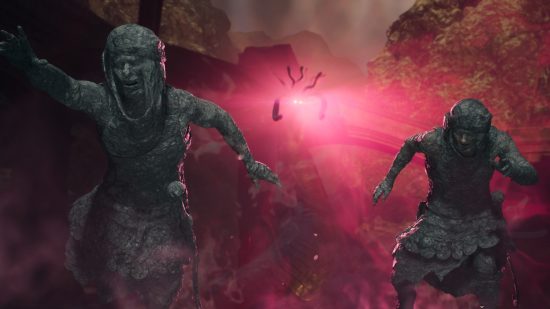What are the best Dragon’s Dogma 2 settings for max fps? The run-up to the release of Dragon’s Dogma 2 on PC was rough, with rumors of frame rate caps and overinflated system requirements. While this largely turned out to be untrue, the final performance of the ARPG on PC isn’t ideal, and mid-range gaming systems will struggle to obtain 60fps without further optimizations.
The Dragon’s Dogma 2 system requirements paint the picture of a game that leans more towards the Alan Wake 2 approach to PC gaming, with less optimization for older components, instead focusing on gamers with high-end gaming PCs.
While game updates are very likely, and these should improve the performance of Dragon’s Dogma 2 on budget gaming PCs, right now, getting a stable 60fps out of the game is a chore, and it impacts gameplay considerably.
Here are the best Dragon’s Dogma 2 settings for the graphics and gameplay:
Best Dragon’s Dogma 2 video settings
- Display Mode: Full Screen
- Screen Resolution: 1920×1080
- VSync: On
- Dynamic Resolution: On
- DLSS Super Resolution: Quality
- DLSS Nvidia Reflex Low Latency: On
- Upscale Sharpness: 4
- Ray Tracing: Off
- Ambient Occlusion: SSAO
- Anti-Aliasing: TAA
- Screen Space Reflections: Off
- Mesh Quality: Min
- Texture Filtering: Medium (Trilinear)
- Texture Quality: High (0.5GB)
- Grass/Tree Quality: Low
- Resource-Intence Effects Quality: Low
- Shadow Quality: Low
- Shadow Cache: On
- Contact Shadows: Off
- Motion Blur: On
- Bloom: On
- Depth of Field: On
- Lens Flare: On
- Lens Distortion: On (+chromatic aberration)
- Subsurface Scattering: Off
- Motion Quality: Low
With the above settings, we were able to achieve an average of 64fps, with 1% lows of 32fps, and 0.1% lows of 22fps. The biggest takeaway from playing Dragon’s Dogma 2 is that an 8GB VRAM GPU is not enough, and you should be looking to use either a 12GB or 16GB model if possible. Even though the average fps might seem acceptable, constant stuttering hampers the experience, especially in the opening hours of the game.
With the above settings, the VRAM usage sat at around 4.5GB, switching everything to high would be closer to 8GB, so small tweaks can make a decent impact on usage, but for the best mix of visual fidelity and performance, you’re going to need a GPU with more than 8GB. The lack of optimization also is what results in poor performance despite only utilizing just over 50% of the Nvidia RTX 3070’s VRAM.
In comparing performance results within the team, we’ve been able to discern that gaming PCs more powerful than the ones we are using seem to struggle even more, with full-game crashes being reported on a regular basis.
Due to being unable to pinpoint any specific settings to improve the overall performance of Dragon’s Dogma 2, we will instead re-test the game when a patch is available.

Best Dragon’s Dogma 2 gameplay settings
- Run Type: Toggle
- Toggle “Hail”: Press
- Cursor Lock: Off
- Minimap Rotation: On
- Auto-Sheathe: On
- Priority of Materials to Combine: Player
- Destination of Combines Items: Player
There aren’t many gameplay settings to tweak in Dragon’s Dogma 2, and those we could find are best left unchanged. Before starting a new game, you can adjust some online features, but these are personal preferences rather than having an objective impact on your gameplay.
How we tested Dragon’s Dogma 2
At PCGamesN, we use specific gaming rigs to test the best settings for performance and gameplay in the latest releases. Currently, our test rigs include the following components; Intel Core i7 11700F, MSI Ventus Nvidia GeForce RTX 3070 8GB, 32GB of DDR4 3200MHz RAM, MSI B560 motherboard. We also test using Widows 11 64-bit.
We use the same rigs to ensure that every game we test is done under fair conditions. We will occasionally upgrade these rigs to ensure they don’t fall massively behind the market and what typical gamers are using based on Steam’s hardware surveys, and this allows us to aim for the highest quality possible in every game we test. In the case of Dragon’s Dogma 2, our rig struggles despite handily beating the minimum requirements. This leads us to believe that there are optimization issues at play that are likely to be fixed by a game update.
Can you play Dragon’s Dogma 2 on an HDD?
Yes, you can install and play Dragon’s Dogma 2 on an HDD, although as with any game, there are benefits to opting for an SSD instead.
As such, opting for one of the best SSDs for gaming is something we’d strongly advise based on the difference in performance and longer loading times we experienced between playing the game on both drive types.
How to monitor performance in Dragon’s Dogma 2
If you want to keep an eye on performance in Dragon’s Dogma, which doesn’t have in-built benchmarking, there are easy methods that work whether you’re using an Nvidia or AMD graphics card.
For Nvidia cards, ensure you have the Nvidia App installed and the in-game overlay enabled, then hit ALT + R in-game to bring up your performance monitor. With AMD cards, you can enable performance monitoring via the Radeon overlay using the shortcut CTRL + SHIFT + O.
Or, you can download free software like Frameview or CapFrameX, for a cleaner, more simplified benchmarking option that works with any graphics card.
If this data has you thinking it’s time to update your rig, we can take you through how to build a gaming PC in 2024 with a step-by-step guide from start to finish.
